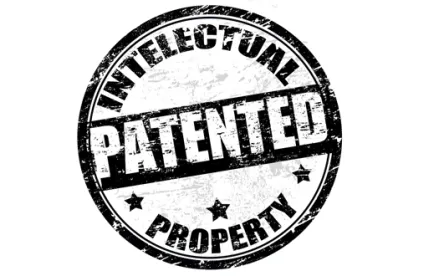Takeaway: Petitioner failed to show how the art disclosed each and every feature recited in the independent claims, resulting in dismissal of Petitioner’s anticipation and obviousness challenges.
In its Decision, the Board denied institution of inter partes review of claims 1-18 of the ’569 patent because Petitioner did not demonstrate a reasonable likelihood of prevailing with respect to any of the challenged claims.
The ’569 patent relates to a heart valve prosthesis. The valve prosthesis is made of an expandable frame with a valve body affixed thereto. The frame contains struts that have a zigzag pattern which define cells. Varying the cell size can create compressibility, expansion characteristics, radial strength, and contour for the frame. The frame has a tri-level asymmetric hourglass shape. The bottom portion of commissures aligns with the zigzag pattern of the struts of the frame to distribute forces evenly. Flaps of adjacent leaflets are affixed in a manner that serves to span a cell of the frame to support commissures.
Petitioner alleged: (1) anticipation of claims 1-18 by Svanidze, (2) anticipation of claims 1-18 by Schwammenthal, (3) anticipation of claims 1-18 by Spenser, (4) obviousness of claims 1-18 over Svanidze and Lashinski, (5) obviousness of claims 1-18 over Schwammenthal and Svanidze, (6) obviousness of claims 1-18 over Spenser and Schwammenthal, (7) obviousness of claims 1-18 over Schwammenthal, Svanidze, and Lashinski, and (8) obviousness of claims 1-18 over Spenser, Schwammenthal, and Lashinski.
The Board adopted the claim constructions proposed by the Petitioner and Patent owner, respectively. “Commissure” was construed as meaning a seam where two materials are joined together. “Coaptation” was construed as meaning a free edge where two materials come together. “Caternary” was construed as meaning a natural U-shaped curve assumed by a free edge when supported at its ends. “Cell” was construed as meaning the spaces defined by the frame structure. “Span” was construed as meaning to extend across.
Petitioner relied on Figures 11 and 12 of Svanidze to show a flared-out inflow section, a flared-out outflow rim, and a valve having commissural tabs stitched directly to hexagon shaped elements. Petitioner also presented Figure 14 of Svanidze to show a different anchoring structure (e.g., frame) having tab attachment windows to create an interference fit between the anchoring structure and the commissural tabs. Patent Owner argues: (1) that Svanidze fails to disclose a commissure configured to span a cell along a region of the frame that increases in diameter, (2) that the portion of the frame at which commissure tabs are attached is at a constant diameter in Svanidze, and thus not increasing in diameter as recited in claim 1, and (3) that Svanidze’s Figure 14 fails to show how commissures would be attached (e.g., whether they span the cell). The Board agreed with Patent Owner on all arguments. Thus, the Board concluded that Petitioner has not shown a reasonable likelihood of prevailing in its anticipation challenge based on Svanidze.
Turning to Petitioner’s assertion that Schwammenthal anticipates the ’569 patent, Patent Owner again argued that the commissures in Schwammenthal do not span a cell of the frame. Petitioner merely asserted that the commissures span a cell without providing any persuasive explanation. Thus, the Board concluded that Petitioner has not shown a reasonable likelihood of prevailing in its anticipation challenge based on Schwammenthal.
Petitioner asserted that Spenser anticipates every claim of the ’569 patent, relying primarily on Figures 17b and 28. Petitioner argued that the commissures in Spenser are sewn to the frame in a region that is increasing in diameter and that each commissure is configured to span a cell of the frame. Patent Owner argued: (1) that the commissures in Spenser do not span a cell of the frame at a region that is increasing in diameter as recited by independent claims 1 and 18 of the ’569 patent, (2) that Spenser does not disclose a frame having a conical inflow section, and (3) that Spenser does not disclose a self-expanding stent. The Board agreed with Patent Owner and concluded that the figures of Spenser depicting a valve showed the frame having parallel walls. The Board also concluded that Petitioner had failed to show that the inlet of Spenser is conical and that the stent is self-expanding. Accordingly, the Board concluded that Petitioner failed to show a reasonable likelihood that Spenser anticipates any claims in the ’569 patent.
The Board concluded that none of Petitioner’s five obviousness challenges remedied any of the aforementioned defects. The Board concluded that the Petitioner failed to show a reasonable likelihood of prevailing on any of its asserted obviousness grounds.
Troy R. Norred v. Medtronic DV Luxembourg S.à.r.l., IPR2015-00167
Paper 9: Decision Denying Institution of Inter Partes Review
Dated: June 4, 2015
Patent 7,914,569
Before: Josiah C. Cocks, William V. Saindon, and James A. Worth
Written by: Saindon



 />i
/>i

